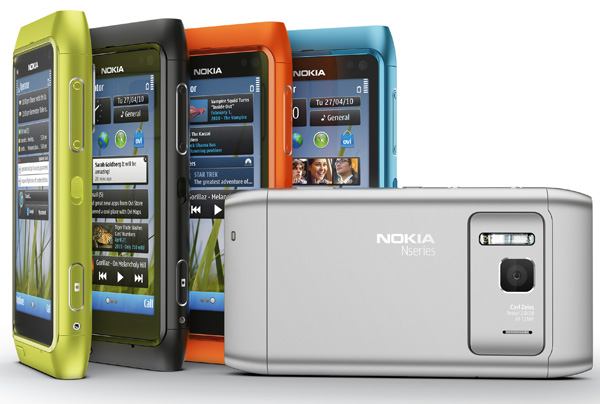Organizer and apps
The Samsung S8530 Wave II comes with the Picsel Viewer on board. It works like a charm and is capable of pinch zooming. Both panning and zooming are fast and the overall performance of the Office viewer is excellent.



 Picsel Viewer on Samsung Wave II
Picsel Viewer on Samsung Wave IIThe calendar has three different types of view - daily, weekly and monthly. Adding a new event is quick and easy, and you can also set an alarm to act as a reminder.



 The organizer centerpiece - the calendar
The organizer centerpiece - the calendarThe Samsung S8530 Wave II features a decent alarm clock application which allows a huge number of alarms to be set, each with its own start time and repeat pattern. It also hosts the world clock, stop-watch and timer functions. There is also a calculator aboard. It is nicely touch optimized - the buttons are big enough and easy to hit. Oh, the Wave II packs a voice recorder as well.



 The Clock app has the alarm options, the world clock, the stop-watch and the timer • Calculator
The Clock app has the alarm options, the world clock, the stop-watch and the timer • CalculatorSamsung have included the My Files app – a simple to use but functional file manager, which also doubles as an image gallery. It can move, copy, lock and rename files in bulk, even send multiple files over Bluetooth.



 The My Files app
The My Files appThe System Manager is the first telltale sign the Wave II is actually a smartphone. It consists of four tabs. The first one shows the device information (model number, firmware version, MAC addresses), the second one displays the battery info, while the third and the fourth inform you on the CPU usage and the memory status, respectively. Along with the CPU usage you can also see the currently running apps and you can start the Task manager.



 The System Manager
The System ManagerThe Memo and Mini Diary are self-explanatory. The first app works with only text, while the Diary lets you also attach pictures.

 The Memo and Mini Diary
The Memo and Mini DiarySocial Hub is the messaging and media sharing Holy Grail – this one app allows you to create a message (it may pack media content too) and then send it to various services – SMS/MMS, email, social networks.

 The Social Hub
The Social HubSamsung also added native Twitter and Facebook clients on the Bada OS. They are nicely touch optimized and have similar looks and functionality as the respective apps for the iPhone and Symbian.



 Facebook • Twitter
Facebook • TwitterThe Smart Search works on everything in your phone – contacts, images, music, videos, emails, history, apps, etc. It works excellent and helps when you have lots of content. It also offers internet search with Google or Bing.


 The Smart Search
The Smart SearchGames
There are two full games pre-installed on the Wave – EDGE and Parachute Panic. You also get the Tumbling dice application.
The Tumbling dice app uses the built-in accelerometer. Shaking the phone for an occasional roll of the dice is a fun way to try your luck, and while it's free, it's not practical or particularly entertaining.
The EDGE is a very simple game, which also uses the accelerometer to control a cube over a space platform. Your goal is one - to make it to the end of the level.
Parachute Panic is very cute game – some guys jump from planes and you must open their parachutes and help them land on the ships below. The game has very nice paper drawing styling and is quite fun.


 Tumbling dice • EDGE • Parachute Panic
Tumbling dice • EDGE • Parachute PanicThere is also a bunch of demo games. They give you only about two minutes of gameplay each.
Unfortunately, Bada OS is still very young and its gaming potential is yet to be revealed in the future.
The Samsung Apps store
The Bada OS offers a native application repository from its start – the Samsung Apps. Samsung Apps is very similar to the Android Market. It has three tabs – featured, top and category view. There is also a download section and search option.



 Samsung Apps
Samsung AppsAt the time we reviewed the original Wave we found only 60 apps over at the Samsung Apps store and now a total of nearly 3000 applications (both free and paid) are at your disposal.
And while this growth sure is impressive, the Samsung Apps store is far behind Apple’s App Store, Google’s Android Market or even the Windows Marketplace of the recently launched Windows Phone 7 platform.
GPS navigation comes at a price
The preinstalled navigation software on the Samsung S8530 Wave II can easily turn the handset in a fully functional SatNav system - especially thanks to the sensitive GPS receiver on board.
Wave II comes supplied with the Samsung LBS app, which is based on the ROUTE66 mobile application. Though its maps graphics have somewhat outdated looks, feature-wise there's really nothing missing. It has voice-guided navigation and a huge number of additional features, but the extra features come at a price.


 The GPS nagigation software
The GPS nagigation softwareThe navigation software comes with 30-day trial license for voice-guided navigation (drive and walk). After that you’ll need a subscription, which is quite expensive. All other goodies require some extra payment and the whole package will cost you a lot.
There is no native Google Maps at this stage, but we hope the app will hit the Bada OS application store soon.






























































































